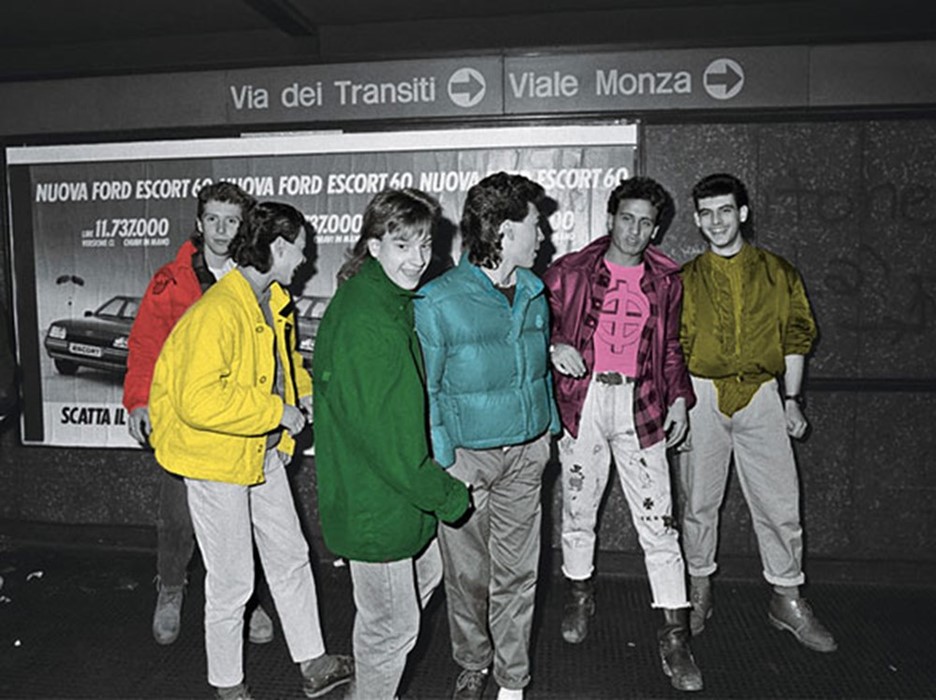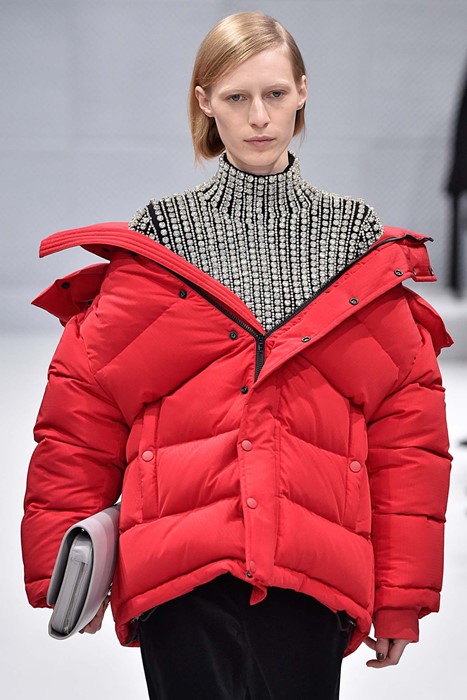From back country to Balenciaga via a Milanese youth cultural movement, we trace the evolution of the padded down jacket
Demna Gvasalia’s Autumn/Winter 2016 collection for Balenciaga saw puffer jackets that crept past the bicep, exposing embellished shoulders. This coat might initially seem at odds with the tradition in which the house of Balenciaga is steeped, but its construction spoke to the same technical precision that fascinated Cristobàl himself – and has provoked a surge of interest for the down coat. However, it has a storied and thoroughly practical history: Eddie Bauer invented the first puffer jacket in 1936. Called the Skyliner, it encased down feathers within quilted fabric and was created out of personal necessity after Bauer nearly lost his life to hypothermia whilst on a fishing trip in mid-winter. Patented in 1940, his creation was entirely successful at keeping the wearer warm. Since its inception the practical garment has reappeared within fashion several times; here the features of this design are traced through the technical artistry of Charles James within his quilted satin evening jacket, and Norma Kamali’s sleeping bag-inspired coat to the Moncler technical wear worn by Milanese youths in the 1980s.

Eiderdown Elegance
The model's arms, placed across her front, accentuate the rounded soft line of the jacket's shoulders; the circular front folds against her black dress and adds prominence to the satined white silk. Designed by Charles James in 1937, the construction of this evening jacket used the same principle as an eiderdown bed quilt. Considered to be one of his most important designs, it is a triumph in both cut and construction, a marker of his extraordinary technical ability as a pattern cutter. James described what he referred to as the 'pneumatic jacket' as a "technical challenge and fantasy", adding that, due to the difficulty of reconstruction he predicted it would have absolutely no importance within the fashion industry. Ironically, it gained cult status in the 70s and, in light of this, James wrote a full description of the development of his design: in it, he notes how he had worried that thickness in certain areas of the garment would impede movement, something he remedied by lessening the depth of the padding around the neckline and armholes.

Precise Practicality
The camera captures the quilted folds of Norma Kamali’s design, which she titled the "sleeping bag coat". The openings of the coat engulf the model as though she is elegantly taking flight. Designed in the early 1970s after Kamali took a camping trip, the collection at The Metropolitan Museum of Art’s Costume Institute holds an electric blue version which comes complete with a sleeping bag cover that the coat neatly packs into. Kamali explains that, "for a few years I continued to use actual sleeping bags", eventually creating "two coats, and stitching them together." The principal feature of this coat is to keep the wearer warm, with practicality at the forefront of the design. The two layers of the coat, with a synthetic alternative to down placed in between, creates a vacuum, where the outside cold air exchanges with the warmth of the body.

Milan and Moncler
The group of young men in this image wear a variety of technical outdoors jackets; in the centre, a Moncler down puffer jacket is worn short over trousers, all the buttons done up save a few at the top. The youths here were part of a Milanese subcultural movement referred to as the Paninari; dubbed as such by La Stampa, the oldest broadsheet in Italy, and earning the name as a result of their favourite haunt, the fast-food café Al Panino where they would meet (immortalised in the Pet Shop Boys’ 1986 B-side Paninaro). The group appropriated technical and workwear clothing meant for activities such as mountaineering, donning labels like Moncler, Timberland, Fiorucci, Armani and Best Company. While embracing an Americana aesthetic, the bright colours of their clothing were distinctively Italian. This movement marked an important shift; suddenly, brands previously used to producing clothes specifically for harsh weather conditions entered the sphere of aesthetic function.
